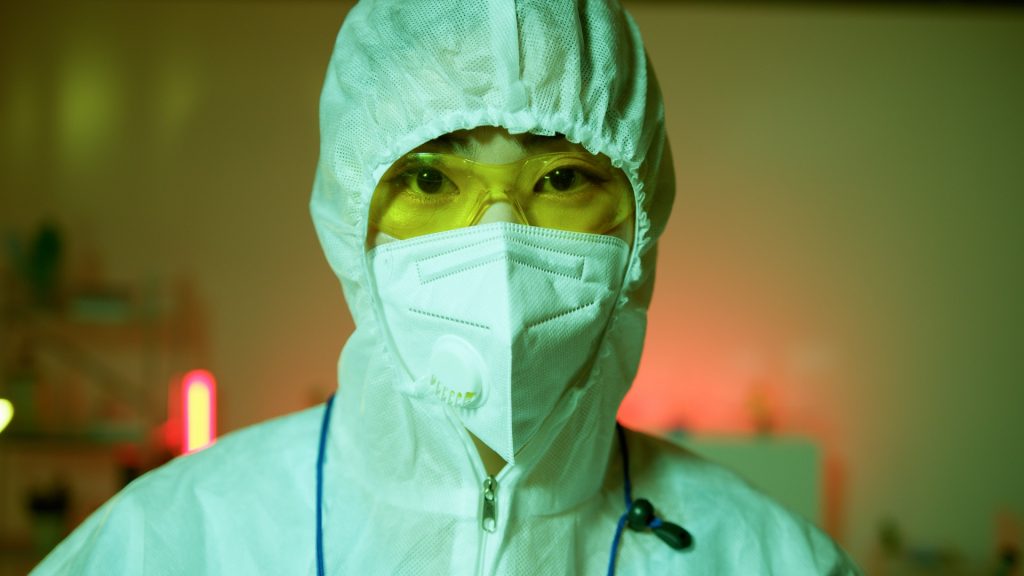
Upgrading face masks to filtering face piece (FFP3) respirators for healthcare workers on COVID wards produced a dramatic reduction in hospital acquired SARS-CoV-2 infections, according to a preliminary study published in the BMJ.
For most of 2020, Cambridge University Hospitals NHS Foundation Trust followed national guidance that healthcare workers should use fluid resistant surgical masks as respiratory protective equipment unless aerosol generating procedures (AGPs) were being carried out when FFP3 respirators were advised.
From the pandemic’s outset, the trust has been regularly screening its healthcare workers for SARS-CoV-2 even when asymptomatic. They found that healthcare workers on “red” COVID wards had a greater infection risk than staff on “green” wards, even with protective equipment. So in December 2020 the trust implemented a change in policy so that staff on red wards wore FFP3 masks instead of fluid resistant surgical masks. The FFP3 standard requires that masks filter 99% of all particles measuring up to 0.6 μm.
The study was carried out at Addenbrooke’s Hospital in Cambridge. Before the change in policy, cases among staff were higher on COVID versus non-COVID wards in seven out of eight weeks analysed. Following the change in protective equipment the incidence of infection on the two types of ward was similar. Of 609 positive results over the eight week study period, 169 were included in the study. Healthcare workers who were not ward based or worked between different wards were excluded, as were, non-clinical staff, and staff working in critical care areas.
The researchers developed a simple mathematical model to quantify the risk of infection for healthcare workers. This found that the risk of direct infection from working on a red ward prior to the policy change was 47 times greater than the corresponding risk from working on a green ward. While almost all cases on green wards were likely caused by community-acquired infection, cases on red wards at the beginning the study period were attributed mainly to direct, ward-based exposure.
The model also suggested that the introduction of FFP3 respirators provided 100% protection (confidence interval 31.3%, 100%) protection against direct, ward based covid infection.
Study author Chris Illingworth, from the MRC Biostatistics Unit at the University of Cambridge, said: “Before the face masks were upgraded, the majority of infections among healthcare workers on the COVID wards were likely because of direct exposure to patients with COVID. Once FFP3 respirators were introduced, the number of cases attributed to exposure on COVID wards dropped dramatically—in fact, our model suggests that FFP3 respirators may have cut ward based infection to zero.”
Michael Weekes from the department of medicine at the University of Cambridge added: “Our data suggest there’s an urgent need to look at the PPE offered to healthcare workers on the frontline. Upgrading the equipment so that FFP3 masks are offered to all healthcare workers caring for patients with COVID could reduce the number of infections, keep more hospital staff safe, and remove some of the burden on already stretched healthcare services caused by absence of key staff because of illness.”
Source: The BMJ
Journal information: BMJ 2021;373:n1663


One Reply to “Upgrade to FFP3 Face Mask Dramatically Cuts Infections”
Comments are closed.